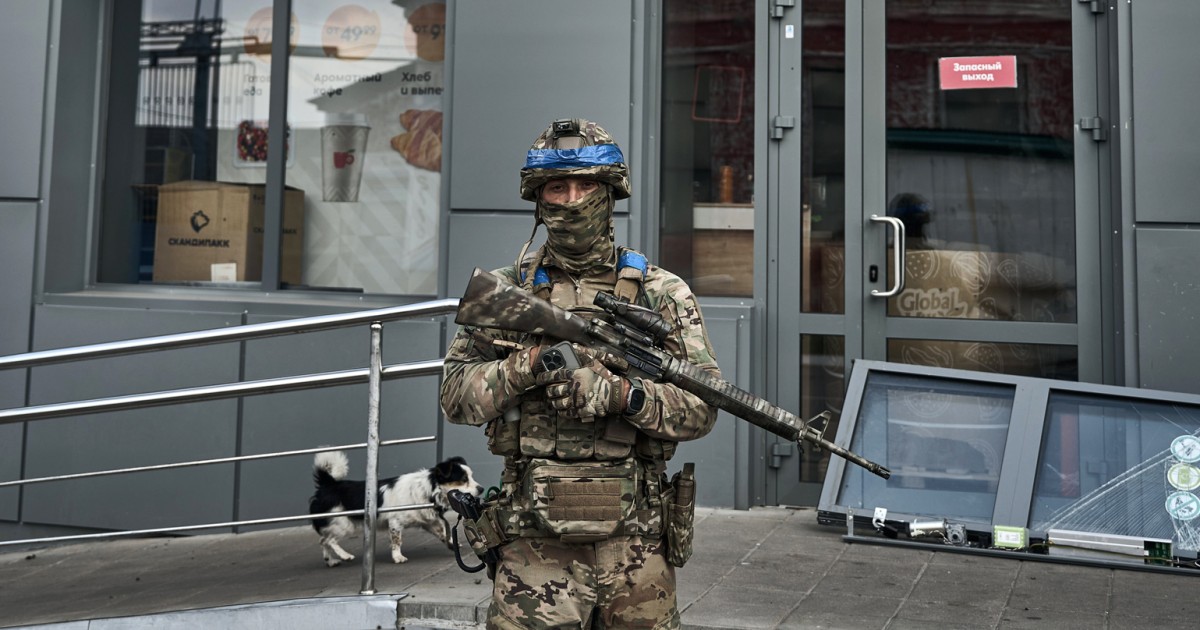Ukraine’s bold military incursion into Russia has caught President Vladimir Putin off guard and impressed NATO countries, but U.S. officials are concerned that if the operation continues, Kyiv’s forces could be stretched too thin.
Russia, so far, has struggled to organize an effective response to the Aug. 6 surprise Ukrainian offensive in the Kursk region, which has forced it to divert some troops from Ukraine to shore up its defenses inside Russia itself, according to three U.S. officials with knowledge of the matter.
But the number of troops that Russia has had to withdraw from Ukraine is “not significant,” said one of the U.S. officials, and it remains unclear if the Russian military will be forced to scale back its presence along front lines near Kharkiv or elsewhere. So far, Russia has yet to mobilize enough combat power to retake the territory captured by Ukraine.
U.S. officials and military analysts warn that there is a risk that Ukraine’s supply lines could be overextended as it tries to sustain troops fighting inside Russia as well as fend off Russian assaults across eastern Ukraine.
“It’s a concern,” said one U.S. official.
As Ukrainian troops push forward inside Russia, including attacks on key bridges leading into the area, Moscow’s forces are advancing in eastern Ukraine, near the city of Pokrovsk.
U.S. officials say the precise objectives of the Ukrainian offensive inside Russia remain unclear, including whether Kyiv intends to hold on to captured territory indefinitely to use as a bargaining chip in potential peace negotiations, or pull back into Ukraine.
Pentagon press secretary Maj. Gen. Patrick Ryder told reporters on Tuesday that the Ukrainians “clearly have compelled the Russians to struggle in their response.”
“It has certainly demonstrated the creativity and the battlefield prowess of the Ukrainians,” Ryder said. “But when it comes to what their longer-term objectives are, that’s something that we’re still discussing with them.”
Defense Secretary Lloyd Austin spoke with his Ukrainian counterpart, Rustem Umerov, on Monday about “battlefield dynamics, Ukraine’s ongoing operations, and Ukrainian reconstitution and training efforts,” the Pentagon said in a statement.
Ukrainian President Volodymyr Zelenskyy said Monday that the offensive is aimed at creating a buffer zone along Ukraine’s border to protect it from Russian aerial bombardment and wear down Russia’s military.
In a speech, Zelenskyy said the offensive has shown that Russia’s threats of retaliation amount to bluster and that Ukraine’s supporters should ease restrictions on the use of Western-made weapons.
“We are witnessing a significant ideological shift — the naive, illusory concept of so-called red lines regarding Russia, which dominated the assessment of the war by some partners, has crumbled these days somewhere near Sudzha,” Zelenskyy said, referring to a town in western Russia now occupied by Ukrainian troops.
Zelenskyy said Ukrainian forces had seized more than 480 square miles and 92 settlements in Russia’s Kursk region. But it is unclear whether they can hold the territory for an extended period.
Matthew Savill, director of military sciences at the Royal United Services Institute, a U.K.-based think tank, said that if Ukraine tries to retain control of the captured area inside Russia, its troops would soon be vulnerable to heavy Russian air and ground attacks.
“The challenge is that it looks like the Ukrainians might be about to consolidate and dig in,” Savill said. “Once they do that, and their rate of advance has slowed, they will become a target. And so the question for them is, how long are they planning to endure?”
If Ukraine tries to hold on to territory around Kursk for several months, “that is going to be tough just to logistically supply that in the face of Russian air attack,” added Savill, a former senior official in the U.K. ministry of defense.
But Savill said there was a chance that Ukraine’s assault in the Kursk region could force Russia to bolster its ranks and pull out large numbers of troops north of the Ukrainian city of Kharkiv, which has been under intense pressure from Russian forces for months.
Savill, other former officials and analysts have said Ukraine’s incursion was designed to change perceptions of the war in the Kremlin, inside Ukraine and among Western allies.
“They have shown that they go on the attack. They can pose a threat,” he said. “They have probably changed calculations in Moscow about the extent to which it needs to defend more effectively along the whole line.”

